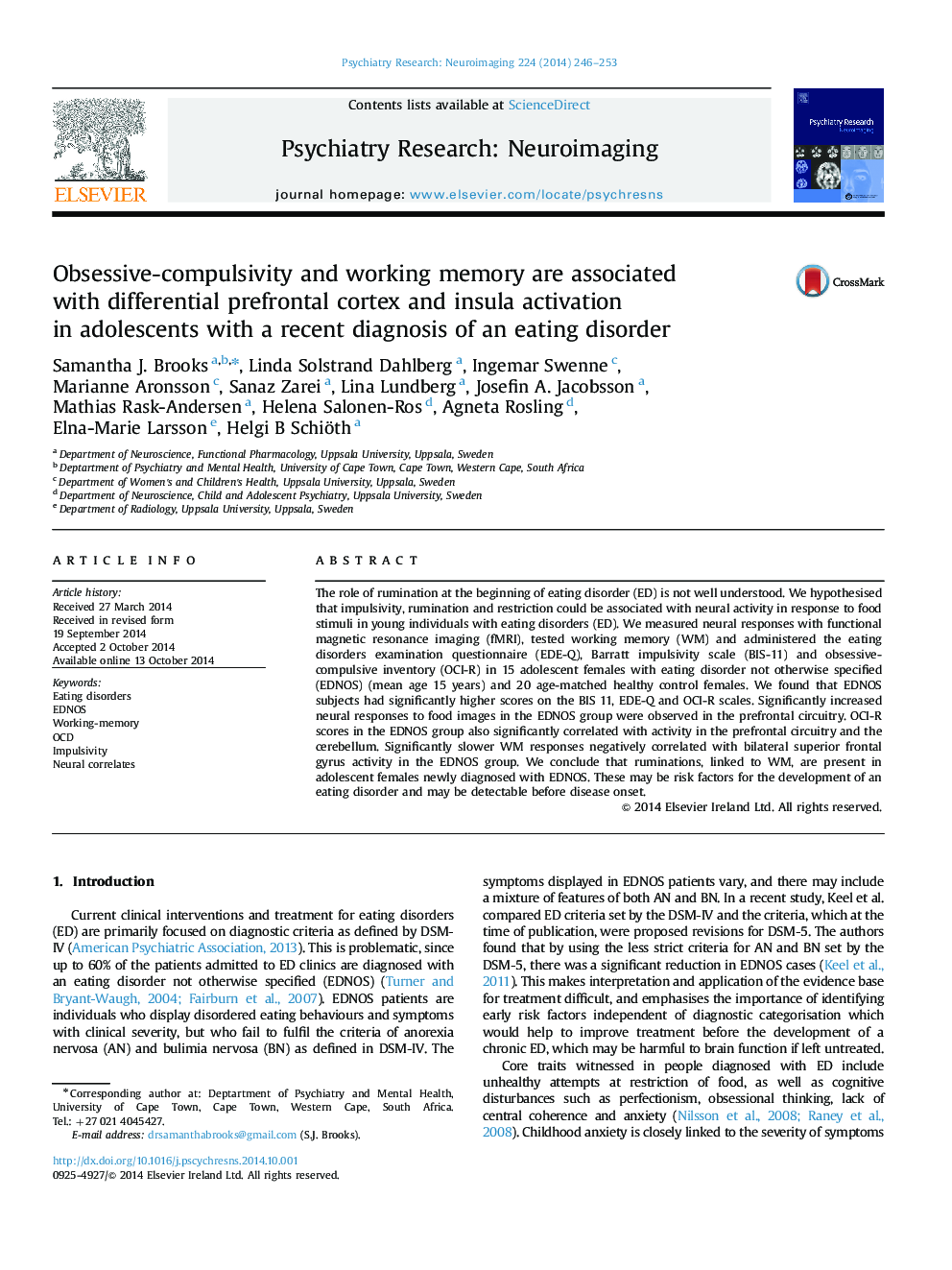| Article ID | Journal | Published Year | Pages | File Type |
|---|---|---|---|---|
| 334757 | Psychiatry Research: Neuroimaging | 2014 | 8 Pages |
•Prefrontal neural responses to food stimuli in adolescents with a new diagnosis of EDNOS.•Impulsivity, rumination and restraint are linked to prefrontal activity.•Working memory performance is linked to prefrontal activity.•Rumination and working memory may predict prefrontal activity in adolescents with EDNOS.
The role of rumination at the beginning of eating disorder (ED) is not well understood. We hypothesised that impulsivity, rumination and restriction could be associated with neural activity in response to food stimuli in young individuals with eating disorders (ED). We measured neural responses with functional magnetic resonance imaging (fMRI), tested working memory (WM) and administered the eating disorders examination questionnaire (EDE-Q), Barratt impulsivity scale (BIS-11) and obsessive-compulsive inventory (OCI-R) in 15 adolescent females with eating disorder not otherwise specified (EDNOS) (mean age 15 years) and 20 age-matched healthy control females. We found that EDNOS subjects had significantly higher scores on the BIS 11, EDE-Q and OCI-R scales. Significantly increased neural responses to food images in the EDNOS group were observed in the prefrontal circuitry. OCI-R scores in the EDNOS group also significantly correlated with activity in the prefrontal circuitry and the cerebellum. Significantly slower WM responses negatively correlated with bilateral superior frontal gyrus activity in the EDNOS group. We conclude that ruminations, linked to WM, are present in adolescent females newly diagnosed with EDNOS. These may be risk factors for the development of an eating disorder and may be detectable before disease onset.
